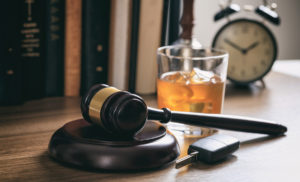Navigating a criminal trial can feel overwhelming, whether you’re a defendant, a witness, a victim, or simply a curious observer. The process is complex, steeped in legal tradition, and designed to ensure justice is served fairly. This step-by-step guide breaks down what happens during a criminal trial in the United States, offering clear, authentic details to demystify the experience and engage readers with practical insights. By understanding each phase, you’ll feel more prepared and informed about this critical aspect of the justice system.
Introduction: The Purpose of a Criminal Trial
A criminal trial is a formal process where the government seeks to prove that a person (the defendant) committed a crime, and the defendant has the opportunity to challenge the accusations. Trials are governed by strict rules of evidence and procedure to ensure fairness. Whether the case is decided by a judge (bench trial) or a jury, the goal is to determine guilt or innocence based on facts, not assumptions. Let’s walk through the key stages of a criminal trial, from jury selection to the final verdict, with details that bring the process to life.
Step 1: Jury Selection
The trial begins with preliminary examination, the process of selecting an impartial jury. In a criminal trial, a jury typically consists of 12 jurors (plus alternates) who will decide the case. Here’s what happens:
- The Process: The judge, along with the prosecution and defense attorneys, questions potential jurors to identify biases or conflicts of interest. For example, a juror who knows the defendant or has strong opinions about the type of crime may be dismissed.
- Challenges: Attorneys can dismiss jurors using peremptory challenges (a limited number without stating a reason) or challenges for cause (if a juror is clearly biased).
- Engaging Detail: Imagine sitting in the courtroom as the judge asks, “Have you or a loved one ever been a victim of a similar crime?” The room is silent, and you can feel the weight of each juror’s response. This step is crucial because the jury’s impartiality shapes the trial’s fairness.
What to Expect: This phase can take hours or days, depending on the case’s complexity. High-profile cases, like those involving public figures, often require extensive questioning to ensure an unbiased jury. If you’re a defendant in a place like Utah, consulting a criminal defense lawyer St George can help you navigate this process with confidence, ensuring your rights are protected from the outset.
Step 2: Opening Statements
Once the jury is seated, the trial moves to opening statements, where both sides outline their case.
- Prosecution’s Role: The prosecutor goes first, explaining what crime was committed, how they’ll prove it, and what evidence they’ll present. They might say, “The evidence will show the defendant was at the scene, holding the weapon.”
- Defense’s Role: The defense attorney follows, offering their perspective. They might argue reasonable doubt or present an alternative narrative, like, “The evidence will reveal my client was misidentified.”
- Engaging Detail: Opening statements are like the opening scenes of a movie—they set the stage but don’t reveal the full story. Attorneys use storytelling to connect with the jury, often weaving facts into a compelling narrative.
What to Expect: These statements are not evidence; they’re previews. They’re typically concise (10–30 minutes) but gripping, as both sides aim to make a strong first impression.
Step 3: Presentation of Evidence
The heart of the trial is the presentation of evidence, where both sides build their cases. This phase is divided into the prosecution’s case, the defense’s case, and sometimes rebuttals.
Prosecution’s Case
- The prosecution presents its evidence first, as they bear the burden of proof to show guilt “beyond a reasonable doubt.”
- Types of Evidence: This includes physical evidence (e.g., a weapon), witness testimony, expert opinions (e.g., forensic analysts), and documents (e.g., phone records).
- Witnesses: Prosecutors call witnesses to testify, and the defense can cross-examine them to challenge credibility or accuracy.
- Engaging Detail: Picture a forensic expert explaining DNA evidence on a bloody glove, while the defense attorney probes, “Could this sample have been contaminated?” The back-and-forth is intense, with jurors leaning in to catch every detail.
Defense’s Case
- After the prosecution rests, the defense presents its evidence. The defendant is not required to testify (protected by the Fifth Amendment), and the defense may choose not to present evidence if they believe the prosecution’s case is weak.
- Strategies: The defense might call alibi witnesses, present alternative theories, or challenge the prosecution’s evidence through experts.
- Engaging Detail: A defendant’s decision to testify is a high-stakes moment. If they take the stand, their credibility is scrutinized, and cross-examination can be grueling.
What to Expect: This phase can last days or weeks, depending on the case. Expect dramatic moments, like a surprise witness or a heated objection from an attorney.
Step 4: Closing Arguments
After all evidence is presented, both sides deliver closing arguments, summarizing their case and urging the jury to reach a specific verdict.
- Prosecution: Reinforces how the evidence proves guilt, often appealing to logic and emotion. “The facts are clear: the defendant’s actions caused harm.”
- Defense: Highlights weaknesses in the prosecution’s case, emphasizing reasonable doubt. “If there’s any uncertainty, you must acquit.”
- Engaging Detail: Closing arguments are a lawyer’s last chance to persuade. They might use powerful analogies, like comparing the case to a puzzle with missing pieces, to sway the jury.
What to Expect: These arguments are persuasive and emotional but cannot introduce new evidence. They’re typically longer than opening statements, lasting 30 minutes to hours.
Step 5: Jury Instructions
Before deliberating, the judge provides jury instructions, explaining the legal standards and rules for reaching a verdict.
- Key Points: The judge clarifies the charges, the burden of proof, and what constitutes a crime. For example, in a murder case, they’ll define “premeditation” or “intent.”
- Engaging Detail: Jurors receive a written copy of instructions, but the judge’s delivery can feel like a professor’s lecture—dense but critical. Misunderstanding these rules can lead to appeals.
What to Expect: This step is technical and may feel tedious, but it ensures the jury applies the law correctly.
Step 6: Jury Deliberation
The jury retires to a private room to deliberate and reach a verdict. This is often the most unpredictable phase.
- Process: Jurors review evidence, discuss testimony, and vote. They must reach a unanimous verdict in most criminal cases (some states allow non-unanimous verdicts for certain crimes).
- Challenges: Disagreements can lead to lengthy deliberations or, in rare cases, a hung jury, where no verdict is reached, potentially leading to a retrial.
- Engaging Detail: Imagine jurors huddled around a table, re-examining a key piece of evidence, like a grainy security video. Tensions can run high as they debate guilt or innocence.
What to Expect: Deliberations can take hours, days, or even weeks. The courtroom waits in suspense, with the defendant’s fate hanging in the balance.
Step 7: The Verdict
Once the jury reaches a verdict, they return to the courtroom, and the foreperson reads it aloud: “Guilty” or “Not Guilty.”
- Guilty Verdict: The defendant may be taken into custody (if not already) or released pending sentencing. The judge schedules a sentencing hearing to determine punishment, which could include prison, fines, or probation.
- Not Guilty Verdict: The defendant is acquitted and free to go. Double jeopardy prevents retrial for the same crime.
- Engaging Detail: The moment the verdict is read is electric. The courtroom is silent, and all eyes are on the jury. For the defendant, it’s a life-altering second.
What to Expect: Emotions run high, and the judge maintains strict order. Appeals may follow if either side believes legal errors occurred.
Step 8: Sentencing (If Guilty)
If the defendant is found guilty, the judge holds a sentencing hearing, often weeks or months later.
- Factors Considered: The judge reviews the crime’s severity, the defendant’s criminal history, victim impact statements, and mitigating circumstances (e.g., remorse).
- Sentencing Guidelines: Federal and state guidelines suggest appropriate punishments, but judges have some discretion.
- Engaging Detail: Victim impact statements can be heart-wrenching, as loved ones describe their loss. The defendant may also speak, pleading for leniency. For victims seeking compensation for related harm, a personal injury law firm can provide legal support to pursue civil remedies alongside the criminal process.
What to Expect: Sentencing varies widely—minor crimes may result in probation, while serious felonies could lead to decades in prison.
Practical Tips for Those Involved in a Trial
- For Defendants: Work closely with your attorney, understand your rights (like the right to remain silent), and prepare for the emotional toll of the process.
- For Witnesses: Be truthful, concise, and calm during testimony. Review your statement beforehand to avoid inconsistencies.
- For Victims or Families: Seek support from victim advocates, who can guide you through the process and explain your rights.
- For Observers: Respect courtroom etiquette—no phones, outbursts, or disruptions. Dress appropriately and arrive on time.
Unique Insights: What Makes a Trial Memorable?
Every trial has moments that stand out:
- Human Stories: Trials reveal raw human experiences—grief, betrayal, redemption. A single witness’s testimony can shift the jury’s perspective.
- Attorney Strategies: Watch for clever tactics, like a defense attorney discrediting a key witness or a prosecutor using a dramatic visual aid.
- Courtroom Dynamics: The judge’s demeanor, the jury’s reactions, and the attorneys’ passion create a unique atmosphere in every case.
Conclusion: Understanding the Journey
A criminal trial is more than a legal proceeding; it’s a quest for truth and justice. By breaking down each step—jury selection, opening statements, evidence, closing arguments, deliberations, verdict, and sentencing—this guide aims to make the process accessible and engaging. Whether you’re directly involved or simply curious, understanding what to expect empowers you to navigate or appreciate this cornerstone of the justice system. If you’re facing a trial, consult a qualified legal services lawyers for personalized guidance, and approach the process with clarity and confidence.




